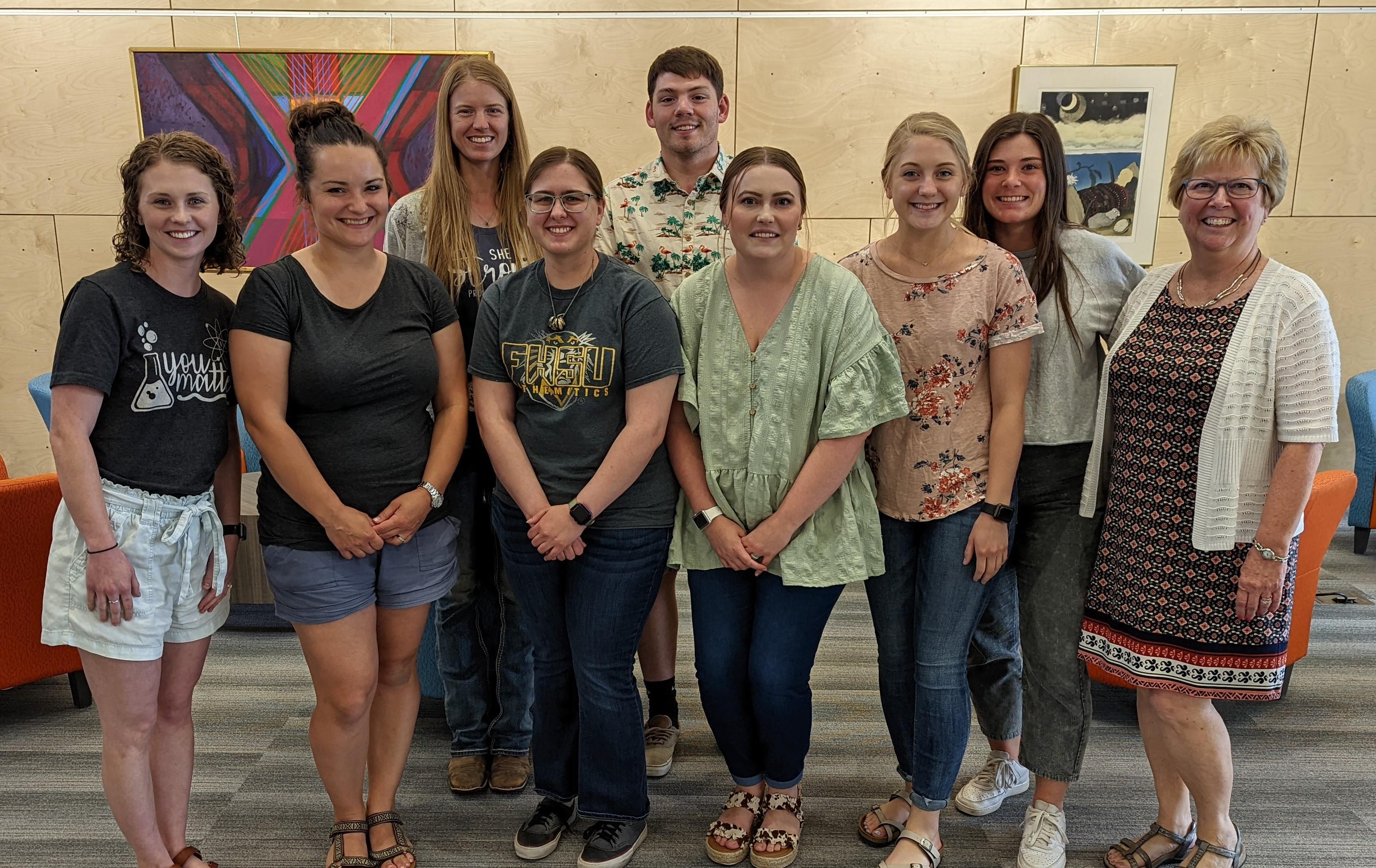Noyce Teacher Leaders Collect Air Quality Data

08/05/22
By FHSU University Communications
HAYS, Kan. – During an add-on day in conjunction with the annual Noyce Summer Summit in June, former Fort Hays State University Noyce Teacher Leaders received training on air quality initiatives thanks to a National Science Foundation grant.
The “Learning Where We Live: A Focus on Air” Workshop, held on the FHSU campus, provided air quality initiative training to math and science teachers from rural districts in Kansas. The training, facilitated by Dr. Paul Adams, FHSU GLOBE Partner Lead and Trainer and Dean of the College of Education, included air quality experts via Zoom. Dr. Kevin Czajkowski, University of Toledo, and Dr. Margaret Pippin, NASA Researcher, focused on the interconnectedness between the air we breathe and events taking place hundreds of miles away.
PM2.5 Purple Air Sensors, the first to be provided to schools in the state of Kansas, were provided to six former FHSU math and science majors who currently teach in high-need Kansas middle and high schools. Teachers included Katie Flax, Lakin Werth, Kole Clarke, Nicole Voss, and Karisma Vigerney. The sensors, located in Oakley, Colby, Ransom, Lyons, Pratt, and the FHSU campus, are used to observe particulate matter.
With the launch of the NASA TEMPO satellite on air quality scheduled for December 2022, NASA is engaging professors, teachers, and students from the U.S. to learn more about air quality issues. Sensor data collected by Noyce Teacher Leaders will be used in conjunction with the satellite mission.
During the workshop, Czajkowski and Pippin discussed how data from the Purple Air Sensors could be used to engage students in the classroom. Key to the benefits of the data is understanding how measurements are related to weather events, clouds, wildfires, and other environmental issues.
“Learning about the Earth as a system provides our teachers with the tools to enrich the world of their students as they research what is happening in their backyard,” Adams said.
“Our Noyce teachers are leaders in their schools,” Stramel said. “As math and science teachers, they have formed this special bond. I always think science and math are all around us. We don’t just do it in isolation.”
The Noyce Teacher Leaders will meet again during the fall semester to share ideas about how the sensors and the data collected have been used in their classrooms.